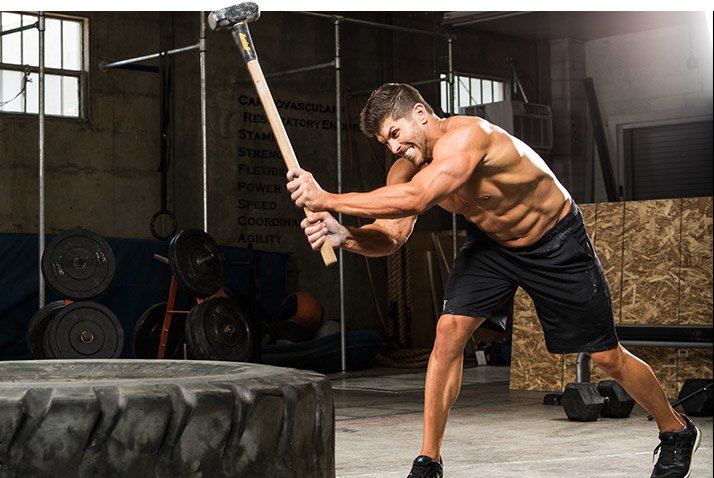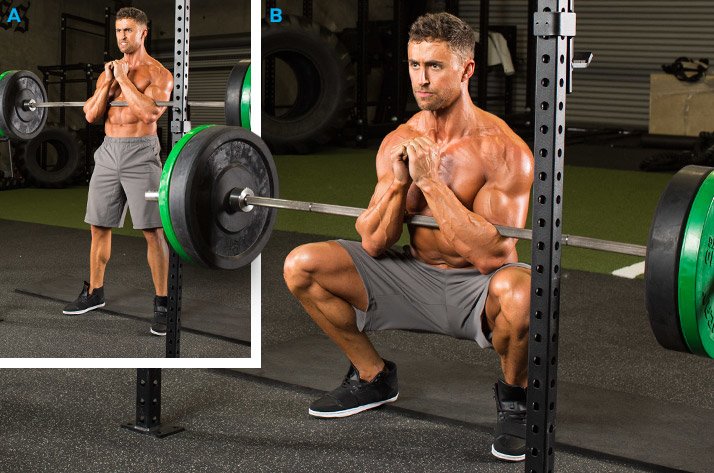
Break The Rules And Get Stronger On Any Lift!
Tired of repeating the same exercises with the same tools week after week? Learn how you can break free of the gym, master new movements, and keep getting stronger!
I was a total by-the-book bodybuilder for almost 13 years, and in some ways, it served me well. I looked strong, and I had some trophies to show for my many hours of hard work in the gym. Unfortunately, that didn't tell the whole story.
I was also getting injured more often than other athletes, some of whom looked like they'd never touched a weight in their life. I was confused and pissed. Why was I in constant pain when I could squat 455, bench 300, and deadlift 500? How was this possible?
My frustration kept building until I made a drastic decision: I stopped lifting at the local gym and got rid of all machine and cable work. I went in the extreme opposite direction from what I had been doing.
I dropped my gym membership and began training—and training athletes—in my parents' garage. All I had was a barbell, a squat stand, some dumbbells, the rocks in my backyard, and the local playground equipment.
My athletes and I would sprint up stairs and hills, push my SUV across the parking lot, and swing sledge hammers every workout.
Were these workouts perfect? Definitely not! But they helped build some of the toughest, strongest, and most successful athletes I've ever worked with, and helped them handle adversity beyond what their competition was able to do.
Here's how to make the same approach work for you.
A Time and Place for Everything
Today, some 13 years after I transitioned out of traditional gym workouts, I have come to a point of evolution and maturity where I understand that strength and muscle discriminates against nothing. That there is a time and place for using machines and free weights, odd objects and bodyweight training. They all work as long as you do the work.

And that is exactly where most people falter. They expect a certain training tool or method to be a shortcut or some kind of magic pill, which is simply not true.
It goes back to what Arnold said about the pain barrier: You have to go through it to succeed. Unless you're pushing the limits in your training, you won't understand or even experience this pain barrier. But it is a key element to becoming a champion—not just in sports or bodybuilding, but also in life. It's far more important than whatever object you're trying to move.
Through The Pain Barrier Arnold Schwarzenegger
Watch the video - 0:56
Put into action, this simply means that your body can get stronger and bigger using any training method or tool. As long as your lifestyle is in check, technique is on point, intensity is high, and dedication is consistent, results will come.
Today, I train myself and my athletes with a variety of tools. They each have their time and place; there are several factors that determine when I use a certain training method or tool:
- Experience in training
- Goals
- Training for sports versus all-around strength and fitness
- Injuries
- Weak areas
- Level of coordination/athleticism
- Level of mental toughness

These are the tools I use to shore up weaknesses from the previous list:
- Barbells and dumbbells
- Kettlebells
- Sandbags
- Stones
- Tractor tires
- Sleds
- Chains
- Kegs, anvils, and other odd objects
This may sound like you need a ton of tools, but most of these implements are easier to find than you think. I've found that many traditional gyms these days are beginning to include kettlebells, sleds, and even sandbags. As for anvils and random heavy stuff, if you feel their call, just start patrolling the online classifieds.
The Right Tool for the Job
You may think you have to do weird, hard-to-learn movements to get any value out of, say, kettlebells or sandbags. The opposite is usually true! The movements I use with each tool often center around the basic exercises like squats, presses, pulls, and carries. Each object gives a different feel and a slightly different effect than the others.

Sandbags: These are a personal favorite of mine. If you're looking for something to "fill the gaps" in your gym work, a sandbag could be enough. Squatting with a sandbag requires you to power clean the bag and rip it off the floor at the start of every set.
The awkward weight puts your body off balance and forces you to wrestle the weight into position, developing crucial coordination as well as mental toughness in the process. But once you have it in position, sandbag squats—like kettlebell goblet squats—also teach proper squat position, so I often teach these variations before a back squat.
Kettlebells: These require a surprising amount of coordination and finesse. The athlete must learn to use only enough energy during exercises like the snatch, clean and press, and Turkish get-up to keep his or her technique in check. Trying to overpower the kettlebell leads to sloppy technique. Bells build focus and discipline, both traits that any serious athlete must have.
Barbells and dumbbells: The free weights will always be the king of the weight room for me, for the simple reason that you can move the most weight with them. But that realization comes with an equally big responsibility to learn form and earn your numbers.
If you want to be barbell-strong, you simply must learn proper technique on the squat, power clean, deadlift, bench press, and bent-over rows! These are all surprisingly advanced exercises, and plenty of otherwise-advanced athletes never developed the strength to do them properly.
Putting Your Program Together
Of course, using all these things together can get messy and complicated. But it doesn't have to if you use a simple system such as training in microcycles. The thing is, athletes thrive on variety. Most of us can't manage to do 12 straight weeks of back squats and stay mentally and physically plugged in. And unless we're participating in a sport where we have to squat a certain way, why should we do the same thing over and over?
Instead, try this progression with your squats for the next 12 weeks:
- Weeks 1-3: Squats with a barbell
- Weeks 4-6: Front squats, shoulder squats, or Zercher squats with sandbag
- Weeks 7-9: Kettlebell double front squats
- Weeks 10-12: Squats with a barbell

Barbell zercher squat
Need more options? There are plenty!
- Back squat
- Box squat
- Barbell Zercher squat
- Wide-stance box squat
- Lower-box-height box squat
- Specialty barbell squat
- Kettlebell goblet squat
- Jump squat (bodyweight or light barbell)
- Kettlebell jump squat (held at side or in sumo position)
You might hesitate to learn a new variation each four weeks, but if you follow this basic progression—originally laid out in my book, "Underground Beast Strength", you can get stronger at pretty much any movement you choose.
- Week 1: Introduce each movement, refine technique, establish baseline loading.
- Week 2: Break records from Week 1, push intensity up a notch, and maintain perfect technique.
- Week 3: Break as many records as possible, especially in the core lifts, maintaining perfect technique.
- Week 4: If all training went according to plan, and Week 3 was a strong week for you, deload.
This is an approach that can be used over and over again, and will only make you stronger with time. Using various tools will help minimize boredom and—just as importantly—injuries from overuse. Try it with any movement you're struggling with now, and get ready to surprise yourself!

